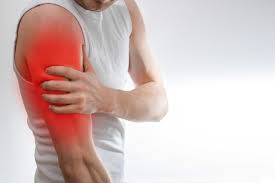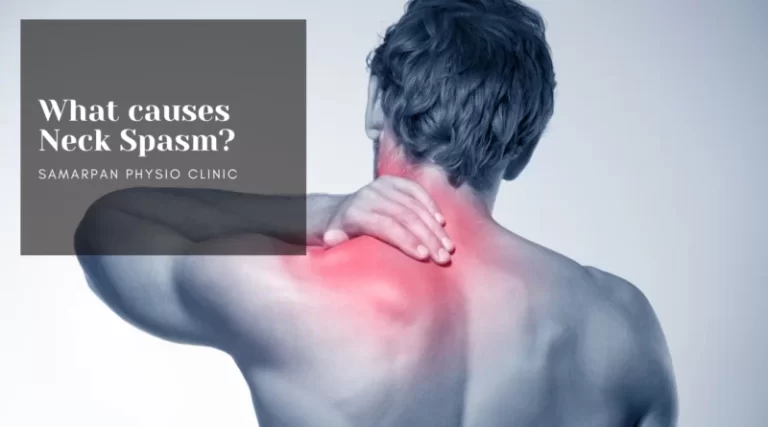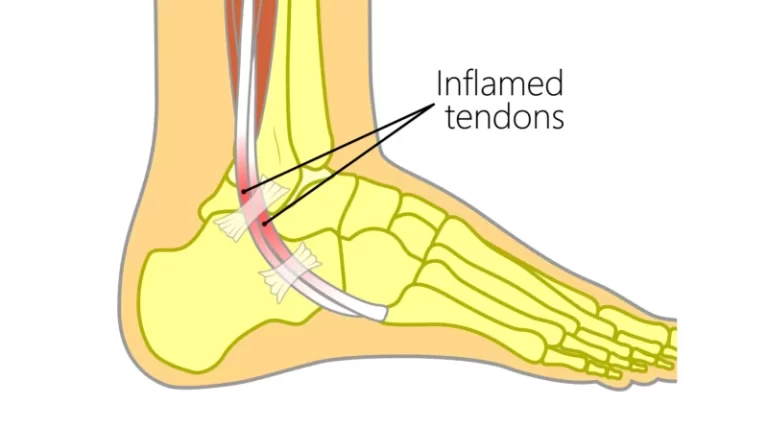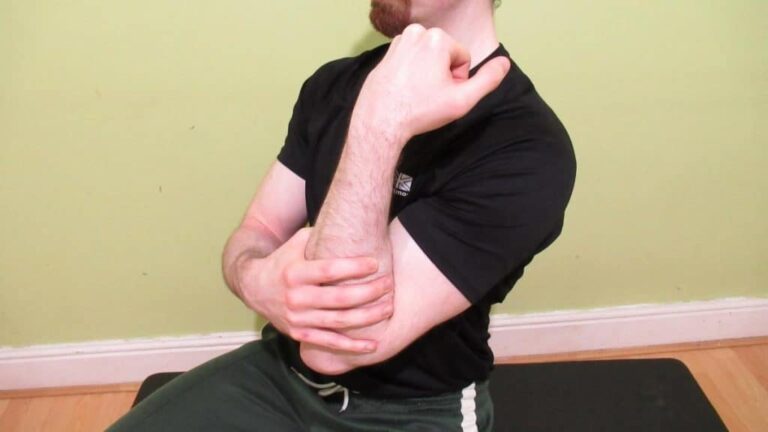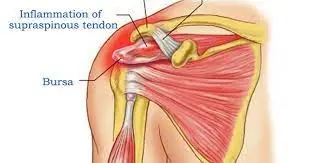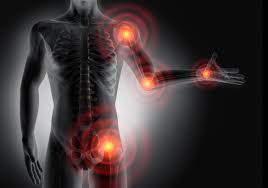Arm Muscle Pain
This arm muscle pain is defined as the discomfort & pain experienced anywhere throughout the arm.
Sometimes this pain includes to wrist, elbow & shoulder joints.
This arm muscle pain occurs due to a variety of causes.
The most common causes of the arm muscles are injury or overuse.
Depending on the cause of the arm this pain starts suddenly & goes away & increases gradually.
This pain is released by to RICE principle & physiotherapy treatment.
Table of Contents
What are the causes of arm muscle pain?
- Overuse:
- When you use an arm for overexertion, repeated movement & is also used for a prolonged time.
- Overuse of this muscle leads to many injuries.
- Pinched nerves:
- These conditions occur when a nerve apply to too much pressure on the surrounding structure of the arm like muscle, tendons, cartilage & bones
- Sprains:
- Sprains means occur to stretch or tearing of the ligaments & tendons.
- It is a common injury.
- Depending on the severity it is defined as mild, moderate & severe sprains.
- Tendonitis:
- This condition occurs to inflammation of the tendon.
- This tendonitis occurs in the shoulders, elbows & wrist joints.
- Tendonitis occurs from mild to severe.
- Rotator cuff injury:
- This injury occurs most often in people who perform overhead motions during their daily activities such as painters & baseball players.
- Broken bones:
- When occur to broken & fractured bones which are produced immense & sharp pain in the arm.
- Rheumatoid arthritis:
- It is a chronic disorder due to inflammation that primarily affects the joints.
- Angina:
- It is chest pain that occurs when your heart is not getting enough oxygen.
- It produces pain in the arm & shoulder as well as pressure in your chest, neck, or back area.
What are the symptoms of the arm muscle injury?
Your symptoms depend on the cause:
- You feel too sharp, dull type of pain.
- You are observed with arm redness & swelling around arm pain.
- You feel stiffness & weakness in the arm muscle.
- Also feeling of tenderness & trigger points in the area of pain.
- Sometimes you feel numbness & tingling around the pain area.
- You also feel to decrease in the ROM of the arm movement.
- You also feel difficulty with arm movement.
- Sometimes you also feel dizziness & shortness of breath.
- Also feeling of radiating or shooting pain during arm pain.
How to diagnose arm muscle pain?
- The doctor is first trying to diagnose the causes of the pain.
- So that doctor is first asked questions about history & physical exam.
- Also ask about your activity, potential injuries & symptoms.
- Then the doctor is asked to check the ROM.
- Blood tests help your doctor to detect some conditions which are produced by arm pain like diabetes & certain conditions like inflammation of the joints.
- X-rays help the doctor diagnose broken or fractured bones.
- When your doctor evaluates your arm pain is associated with potential heart complications, that doctor is also advised to do some tests.
- Ultrasounds help doctors detect problems with joints, ligaments & tendons.
- Sometimes Your doctor advises MRIs & CT scans to get a more detailed image of soft tissue & bones for further diagnosis.
- Nerve Conduction Study:
- This procedure is help to measure nerve impulses when a small amount of electrical current is applied to detect the damaged nerves.
- Electromyography (EMG):
- This test involves inserting a needle electrode into muscles to measure the electrical activity, which helps to detect damage to nerves leading to muscles.
In which condition do you need to contact a doctor as an emergency?
- Most of the time arm pain is not a need for a medical emergency.
- In many cases of arm pain, you can treat this pain with home remedies but some conditions need to be emergency.
- You must call 911 immediately if you feel these symptoms include :
- When you feel chest pain & pressure.
- When this pain is radiate in the back, neck & upper body.
- The feeling of dizziness & light headedness.
- When you feel nausea & shortness of breath.
- If you are feeling too severe or sharp pain.
- When you have visible physical deformities, like your arm & wrist joint sticking out at an angle
- If you feeling of unable to bend or turn over arms, hands & fingers.
Which condition occurs due to arm muscle pain?
- Carpal tunnel syndrome:
- is a common condition that occurs caused by repetitive movements in the hands, wrists, or fingers.
- which is lead to tingling, numbness & weakness in your arms, palms & fingers.
- The tennis elbow:
- Is also known as lateral epicondylitis.
- This condition id mostly occurs due to repetitive movements in the arms, elbows joint & mostly the wrist joint.
- This condition is lead to pain & weakness in the elbow joint or forearm, along with tenderness & trigger points on the outside of the elbow joint.
- Frozen shoulder:
- Is also known as adhesive capsulitis.
- This condition is a less common condition that tends to affect adults ages 40 to 60.
- In this condition occur to pain & limited range of motion – ROM.
- This condition occurs when connective tissue around the shoulder joint becomes thickened & inflamed.
- Deep vein thrombosis of the upper extremity:
- It occurs when a blood clot occurs in a deep vein of the arm which is produce swelling, extreme pain & arm fatigue.
What is the risk factor for arm muscle pain?
- In the Woman higher risk of developing carpal tunnel syndrome.
- When you suffer from thyroid Problems it also increases the risk of carpal tunnel syndrome.
- Diabetes also leads to nerve damage.
- Obesity = it is applied more pressure on nerves & increasing the risk of compression.
- Pregnancy
- Overuse of any action
- Always relax your grip means don’t grasp a pen, handle & anything else harder than accomplish the task at hand.
- Take breaks = always take a short break from repetitive tasks which is help you avoid injury.
- To optimize your computer mouse means to make sure your hand reaches your mouse at an angle that is become too comfortable.
What is the treatment for arm muscle pain?
RICE principle:
When you feel muscle pain in the arm muscle doctor is advised to RICE principle as home treatment or primary treatment.
- R – rest = Reducing the activity involving the forearm which helps the injured tendon, ligament, muscle, bone & nerve to recover, you do the rest periodically rather than remaining inactive for sustained periods.
- If the person presents with sports-related forearm pain avoid the sport till the pain is entirely subsided.
- I – ice = Applied ice on the area of pain for 20 minutes which is help to reduce inflammation & pain, you can is also used an ice pack & frozen peas to release the pain.
- C – compression = In the cases whereby movement is very painful, a person is required to splint & sling to restrict the movement & minimize pain.
- E – elevation = Elevate the arm with the help of a pillow reduce to swellings.
Pain medication:
- In some cases, when the pain is not relived then your doctor prescribes pain medication like anti-inflammatory medications.
- For inflammation, the doctor advises to you anti-inflammatory medications such as corticosteroids which help you reduce the underlying cause & the subsequent pain.
- These anti-inflammatory drugs are available as oral medications, injections & intravenous medications.
- You can also apply pain-relieving gel & spray like volini gel & spray on the area of muscle pain release to muscle pain & swellings.
What is Physiotherapy treatment for arm muscle pain?
When the muscle pain is not relieved after the home treatment & pain medication then the doctor has advised physiotherapy treatment to release forearm pain.
Physiotherapy treatment is help you relieve pain, swelling, spam & tightness of the muscle pain.
The physiotherapy treatment includes massage, electrotherapy treatment & exercise therapy.
Massage:
- When the trigger & tender points are present in the muscle pain area therapist is advised to massage therapy release to the muscle pain.
- Massage is applied after 2 – 3 days of following the RICE principle when you are not feeling enough to release the muscle pain.
- Massage is applied with the help of the oil & applied for 5 -10 minutes.
- Massage is applied 3 times per day at home.
Electrotherapy treatment:
After the RICE principle, pain medication & massage if the muscle pain is not relieved then used Electrotherapy treatment for released muscle pain.
To relive the swellings, spams & pain therapist is advised to you electrotherapy treatment.
In electrotherapy, the treatment therapist is used to many machines.
- When the trigger & tender points are present therapists are advised & to apply US = ultrasound therapy for the release of muscle pain.
- This treatment is applied with the help of gel & applies for 5 to 10 minutes on the area of pain.
- This therapy helps you release pain & swelling.
- Reduce pain therapist is applied to SWD = short wave diathermy, IFT = Interferential Therapy, TENS = Transcutaneous Electrical Nerve Stimulation on the area of muscle pain.
- SWD = Short wave diathermy is hot therapy for release to spams on the area of muscle pain.
- IFT = Interferential Therapy & TENS = Transcutaneous Electrical Nerve Stimulation is applied with the help of gel & electrodes on the area of muscle pain.
- This therapy is applied for 10 minutes to the area of muscle pain.
Exercise therapy for arm muscle pain:
After following the RICE principle for the 2- 3 days at home & primary treatment & the help of pain medication, you feel released from the pain.
When you feel too comfortable & release from your muscle pain then the physiotherapist is advised to you exercise therapy reduce to muscle weakness & tightness.
The exercise therapy for muscle pain includes stretching & strengthening exercises.
Stretching exercise helps to relieve muscle tightness as well as strengthening exercise is help you relieve muscle weakness.
Stretching exercise:
After the follow of electrotherapy for 2-3 days for release to muscle pain by the physiotherapist then the therapist is advised to stretch for release to muscle tightness.
This stretching is applied when your pain is released & when you feel comfortable.
- Shoulder stretch
- Neck release
- Triceps stretching
- Across-the-chest stretch
- Doorway shoulder stretch
- Towel stretch
Shoulder stretch:
- You are in a standing position.
- Try to raise your shoulder joint.
- Hold this exercise for 10 seconds.
- Then squeeze your shoulder joint back & together.
- Hold this exercise for 10 seconds.
- Try to pull your shoulder blades downward.
- Hold this exercise for 10 seconds.
- Relax & repeat this exercise 10 times.
Neck release:
- This exercise helps you gentle way to loosen tension in your neck & shoulder joints.
- Perform this stretching in a sitting or standing position.
- Then lower your chin toward your chest.
- You feel a stretch along the back of your neck.
- Try to gently tilt your head to the left side to stretch your right shoulder joint.
- Hold this stretching position for up to 30 seconds & repeat on the opposite side.
- Do this stretching each side 3–5 times.
Triceps stretching:
- You are In a sitting or standing position.
- Try to lift one arm above your head & bend the arm so that reaches towards your back, behind your head.
- With the opposite hand, gently push back against the bent elbow.
- Hold this exercise for 30 seconds & feeling the stretch in the tricep muscle.
- Do this stretching each side 3–5 times.
Across-the-chest stretch:
- You are performing this stretching in a sitting or standing position.
- First, start your right arm across your chest.
- Then place the arm in the crease of your elbow joint.
- You are using your hand to support your arm.
- Hold this stretching position for 30 seconds & repeat on the opposite side.
- Do this stretching each side 3–5 times.
- To deepen the stretch, lift your arm at shoulder joint height.
Doorway shoulder stretch:
- You are standing near a doorway with your elbow joint & arms forming a 90-degree angle.
- First, step your right foot forward as you press your palms into the sides of the door frame.
- Try to Lean forward & engage your core muscle.
- Hold this stretching position for up to 30 seconds.
- Then repeat the stretching with your left foot forward.
- Do this stretching exercise on each side 2–3 times.
Towel stretch:
- First, hold one end of a three-foot-long towel behind your back & grab the opposite end with your other hand.
- You are holding the towel in a horizontal position.
- You must use your good arm to pull the affected arm upward to stretch it.
- You are also performing an advanced version of this exercise with your towel draped over your good shoulder joint.
- Then hold the bottom of the towel with the affected arm.
- Try to pull the arm toward the lower back with the use of the unaffected arm.
- Do this 10 to 20 times a day.
Strengthening Exercises:
After the follow of Electrotherapy & massage for 2 -3 days to release muscle pain by the physiotherapist then the therapist is advised to you do strengthening exercises for muscle weakness.
This strengthening exercise is always advised when you feel to release pain & when you feel comfortable.
This all strengthening exercise helps you muscle weakness & pain.
- Chest expansion
- Eagle arms spinal rolls
- Shoulder circles
- Pendulum exercise
- Wand exercise
- Lateral raises
- External shoulder rotation
- Internal shoulder rotation
- Scapula Setting
- Scapular Retraction/Protraction movement
- Pully exercise
- Finger ladder Exercises
- Shoulder Roll
Chest expansion:
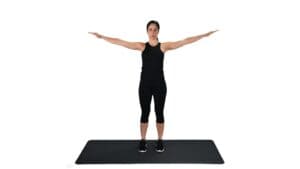
- You are in a standing position for this exercise.
- Then hold an exercise band, strap & towel behind your back with both hands.
- Try to broaden across your chest as you move your shoulder joint toward each other.
- Then lift your chin & look up toward the ceiling.
- Hold this exercise for up to 30 seconds.
- Repeat this exercise 3–5 times.
- to deepen the exercise, place your hands closer together along with the towel & strap.
Eagle arms spinal rolls:
- You are in a sitting position & extend your arms out to the sides.
- Try to cross your elbow joint in front of your body with your right arm on top.
- Bend your elbow joint & place the backs of your forearms or hands together.
- Then reach your right hand around to bring your palms together.
- Hold this exercise position for 15 seconds.
- On an exhale position roll your spine as your draw your elbow joint in toward your chest.
- In an inhale position open your chest & lift your arms.
- Continue this exercise movement for 1 minute & repeat on the opposite side.
- Repeat this exercise 3–5 times.
Shoulder circles:
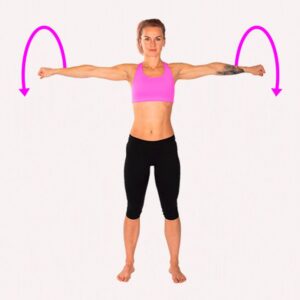
- You are in a standing position with your left hand on the back of a chair.
- Then allow your right hand to hang down.
- Try to make a circle on your right hand 5 times in each direction.
- Repeat this exercise on the opposite side.
- Do this exercise 3 times per day.
Pendulum exercise:
- The patient is in a standing position beside a table with the hand of the unaffected shoulder on the table & feet are slightly wider than shoulder-width apart.
- Bend the hip joint approximately to 75 to 90 degrees & let the affected arm hang down toward the floor.
- Try to Shift the weight from side to side, letting the arms swing freely from side to side.
- Then Shift the weight forward & backward, letting the arms swing freely front to back.
- Once they feel comfortable with these movements, move the body so that the arm swings in a circle.
- Must be Keep the circle small, less than 8 inches.
- Continue for 30 seconds.
- Every day, increase the time to 3 to 5 minutes.
- Repeat this exercise 10 times per day.
Wand exercise:
- This exercise is helpful to you for increasing ROM exercise.
- You are holding the wand with the help of both hands.
- Try to perform the shoulder & elbow joint movement.
- Shoulder flexion,abduction,adduction,external & internal rotation & elbow flexion,extension movement perform with the wand.
- Every exercise does the 2–3 times per day.
Lateral raises:
- First, you are holding a pair of light dumbbells for this exercise.
- You are in a standing position with the feet slightly wider than the hip joint width apart.
- Try to raise the weights to the sides till are at shoulder level.
- Must be remembered to engage the core muscles & slowly lower the weights down to the sides.
- Repeat this exercise for 2 sets, with every set consisting of 12–15 reps & 3 to 4 times per week.
External shoulder rotation:
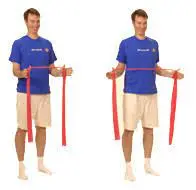
- First, you hold the light resistance band in both hands.
- Must keep both arms at the sides of the body & bend them at the elbow joint.
- Then keep one arm still & rotate the other away from the body while maintaining the 90-degree elbow joint bending.
- Hold this exercise position for 5 seconds & slowly return the arm toward the body.
- Repeat this exercise for 2 sets, with every set consisting of 12–15 reps & 3 to 4 times per week.
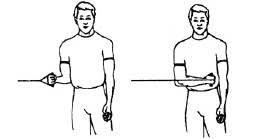
Internal shoulder rotation:
- First, you are attaching a resistance band & a large elastic band to a doorknob.
- The other end of this band is held in one hand.
- Try to bend the arm at the elbow joint & pull the forearm toward the body.
- Hold this exercise position for 5 seconds & slowly return the arm toward the body.
- Repeat this exercise for 2 sets, with every set consisting of 12–15 reps & 3 to 4 times per week.
Scapula Setting:
- You are lying on your stomach means in a prone position with your arms by your sides.
- First, you place a pillow under your forehead for your comfort.
- Try to gently draw your shoulder joints together & down your back as far as possible.
- Ease this exercise halfway off from this position & hold this exercise for 10 seconds.
- Relax from the exercise position & repeat this exercise 10 times.
Scapular Retraction/Protraction movement:

- You are lying on your stomach in a prone position on a table & bed with your injured arm hanging over the side.
- Must keep your elbow joint straight & lift the weight slowly.
- Try to squeeze your shoulder joint toward the opposite side as you can possible.
- Then return slowly to the starting position & repeat this exercise.
- Do this exercise 2–3 times per day.
Pully exercise:
- First, you hold a rope – pully on both hands then perform the movement of the shoulder.
- Flexion,abduction,external & internal rotation.
- This exercise is performed 10 times in 1 session & 3 sessions per day.
Finger ladder Exercises:
- You are in a standing position & facing a ladder that is hanging over a wall.
- Place the affected hands on the ladder at a low level.
- Try to slowly start an upward climb on the finger ladder till it reached the top & slowly down back to the starting.
- This exercise is performed 10 times in 1 session & 3 sessions per day.
Shoulder Roll:
- You are in a standing position with your back straight & your feet apart.
- First place your arms at your sides
- Take a deep breath & lift your shoulder joint to slowly rotate.
- Try to move your shoulder joint back while you lift something so that you squeeze your shoulder joint muscles together.
- In exhale position lower your shoulders.
- Move your shoulder joint forward & you feel a stretch along the backside of your shoulder joint.
- Repeat this exercise 10 times.
What are the complications of Arm Pain?
- When producing aches & pains in your arm, shoulder, or wrist joint is makes it too difficult to type, write, talk on the phone, & go about your daily activities.
- Some other undiagnosed & untreated types of injuries & inflammation which are lead to serious tissue damage that requires surgery.
How to prevent arm pain?
Many cases of arm pain are preventable so always try to follow these prevention points:
- Always stretch the muscle regularly, particularly before the exercise.
- Always do the correct & proper form for the exercises which is also helpful to prevent injury
- Try to wear protective equipment during playing sports
- Lift the objects carefully & the correct way.

